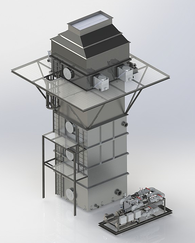In 2009 I wrote a blog piece about the new EPA rules promulgated for the hospital, medical, and infectious waste incinerator (HMIWI) maximum achievable control technology (MACT)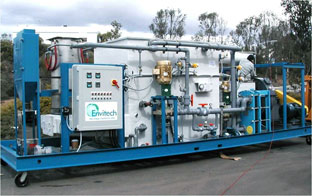 standard. The compliance dates for these rules are fast approaching. Facilities with existing equipment must demonstrate compliance to the new standards by October 2014. Envitech is already under contract with several facilities to retro-fit existing medical waste incinerator scrubbers with add-on control equipment to meet the new standards.
standard. The compliance dates for these rules are fast approaching. Facilities with existing equipment must demonstrate compliance to the new standards by October 2014. Envitech is already under contract with several facilities to retro-fit existing medical waste incinerator scrubbers with add-on control equipment to meet the new standards.
The emissions reduction challenge with the new rules can be seen in the adjacent graph which compares the difference between the 2007 MACT standard to the new MACT standard. 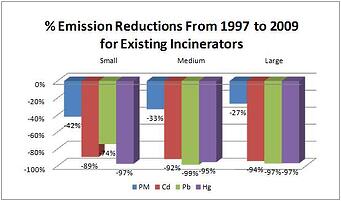 Stack emissions must meet substantially lower limits for Cd, Pb, and Hg. In many cases, this requires add-on controls capable of greater than 90% removal of sub-micron condensed metals. Most facilities are putting on a re-heat and filter package to remove the condensed metals. A few will use wet electrostatic precipitators (WESP) which are more expensive. The ability to meet the new rules using a re-heat and filter package has been demonstrated for lead and cadmium on a commercial and industrial waste incinerator (CISWI). The WESP capability has been demonstrated for reduction of lead emission achieved at a secondary lead smelter in California.
Stack emissions must meet substantially lower limits for Cd, Pb, and Hg. In many cases, this requires add-on controls capable of greater than 90% removal of sub-micron condensed metals. Most facilities are putting on a re-heat and filter package to remove the condensed metals. A few will use wet electrostatic precipitators (WESP) which are more expensive. The ability to meet the new rules using a re-heat and filter package has been demonstrated for lead and cadmium on a commercial and industrial waste incinerator (CISWI). The WESP capability has been demonstrated for reduction of lead emission achieved at a secondary lead smelter in California.
Another emissions reductions challenge is dioxins/furans (D/F). Emission limits for D/F have been reduced from 125 ng/dscm Total and 2.3 ng/dscm TEQ (corrected to 7% O2) to 25 and 0.6 ng/dscm, respectively. These emission limits are too low to be met with carbon injection. An add-on control package of re-heat and carbon bed absorber is required to meet the new limits.
Solutions to these challenges exist and facilities are taking steps to meet them. Click on the link below to download the HMIWI MACT Rule paper from the 2010 International Conference of Thermal Treatment Technologies and Hazardous Waste Combustors (IT3/HWC).



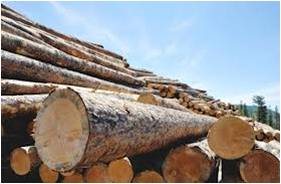 April 8-10, 2013. We will exhibit at Booth 807. During the conference I will be presenting in the Pellets & Densified Biomass track between 8:30 am and 10:00 on Wednesday, April 10th. The topic will be "High Performance Wet Electrostatic Precipitator (WESP) for Pellet Mills".
April 8-10, 2013. We will exhibit at Booth 807. During the conference I will be presenting in the Pellets & Densified Biomass track between 8:30 am and 10:00 on Wednesday, April 10th. The topic will be "High Performance Wet Electrostatic Precipitator (WESP) for Pellet Mills". 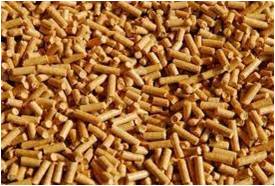 These mills use wood dryers to remove moisture from incoming feed material. A wet electrostatic precipitator (WESP) collects particulate (PM) and condensed volatile organic compounds (VOC) from the dryer exhaust. This is required to protect a downstream regenerative thermal oxidizer (RTO) from fouling. The RTO destroys volatile organic compounds (VOCs) before exhausting to the atmosphere. The process flow conditions are large and typically several hundred thousand cubic feet per minute.
These mills use wood dryers to remove moisture from incoming feed material. A wet electrostatic precipitator (WESP) collects particulate (PM) and condensed volatile organic compounds (VOC) from the dryer exhaust. This is required to protect a downstream regenerative thermal oxidizer (RTO) from fouling. The RTO destroys volatile organic compounds (VOCs) before exhausting to the atmosphere. The process flow conditions are large and typically several hundred thousand cubic feet per minute.
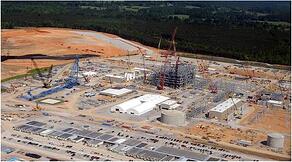 Kemper County Coal Gasificaton Integrated Combined Cycle (IGCC) Project. The project is a 582-megawatt power plant currently under construction. The facility will convert locally mined lignite coal into energy using a state of the art coal gasification process call Transport Integrated Gasification, or TRIGTM. The process enables a 65% CO2 reduction making green house gas emissions equivalent to similar size natural gas combined cycle power plant
Kemper County Coal Gasificaton Integrated Combined Cycle (IGCC) Project. The project is a 582-megawatt power plant currently under construction. The facility will convert locally mined lignite coal into energy using a state of the art coal gasification process call Transport Integrated Gasification, or TRIGTM. The process enables a 65% CO2 reduction making green house gas emissions equivalent to similar size natural gas combined cycle power plant

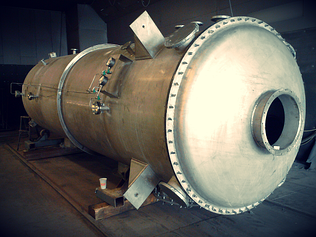 Emissions from marine vessels contribute to global smog forming pollutants. In response, the International Maritime Organization (IMO) has adopted new regulations in MARPOL Annex VI for progressive reduction of NOx, SOx, and Particulate. The new regulations require ships to achieve a SOx reduction equivalent to 0.1% sulfur fuel by 2015. This requirement can be met by using more expensive, low sulfur fuel, or by using a marine diesel scrubber. The scrubbers must achieve greater than 97% SOx removal with 3.5% sulfur fuel. A cost effective scrubber is needed to help ship operators comply with these rules and avoid high cost ultra-low sulfur fuel.
Emissions from marine vessels contribute to global smog forming pollutants. In response, the International Maritime Organization (IMO) has adopted new regulations in MARPOL Annex VI for progressive reduction of NOx, SOx, and Particulate. The new regulations require ships to achieve a SOx reduction equivalent to 0.1% sulfur fuel by 2015. This requirement can be met by using more expensive, low sulfur fuel, or by using a marine diesel scrubber. The scrubbers must achieve greater than 97% SOx removal with 3.5% sulfur fuel. A cost effective scrubber is needed to help ship operators comply with these rules and avoid high cost ultra-low sulfur fuel.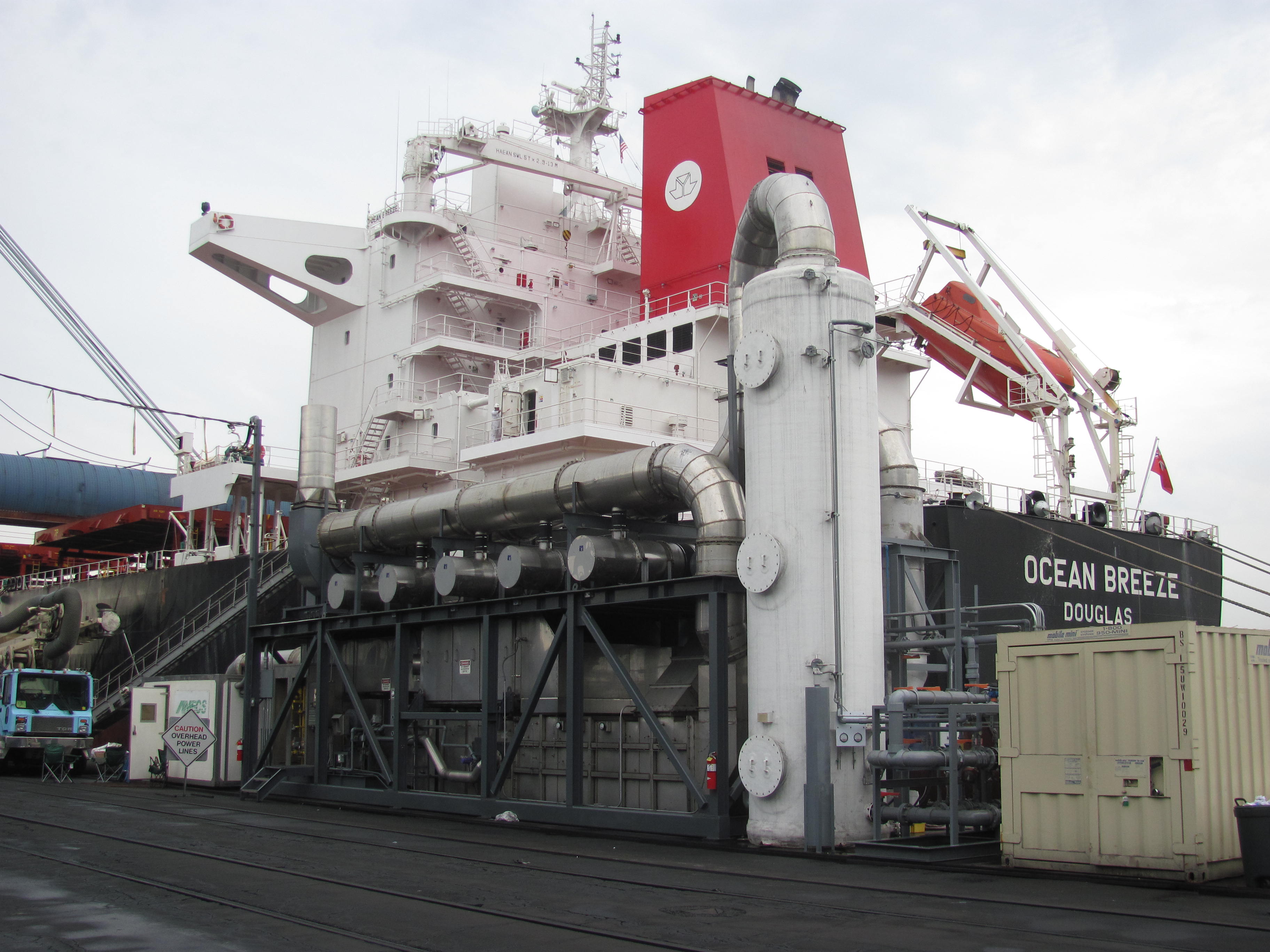

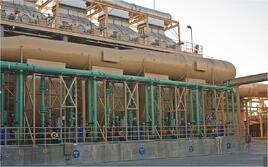 from used automobile batteries. The process uses a combination of combustion processes including kilns and furnaces. Despite extensive control equipment including bag-houses, HEPA filters, and wet scrubbers, low concentrations of heavy metals were being emitted from various stack sources. Cancer risk index standards were being exceeded due to the close proximity of residents to the plant. To be compliant with state regulations a solution was needed to reduce these emissions. The special circumstances of nearby residents and a stringent cancer risk index required the facility to meet emission limits well below any other secondary lead smelter in the country.
from used automobile batteries. The process uses a combination of combustion processes including kilns and furnaces. Despite extensive control equipment including bag-houses, HEPA filters, and wet scrubbers, low concentrations of heavy metals were being emitted from various stack sources. Cancer risk index standards were being exceeded due to the close proximity of residents to the plant. To be compliant with state regulations a solution was needed to reduce these emissions. The special circumstances of nearby residents and a stringent cancer risk index required the facility to meet emission limits well below any other secondary lead smelter in the country. 
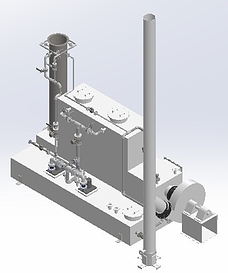 will increase production to nearly 20 MM gpy. The state requires a direct fired heater to reduce SO2 emissions by 95%. Although packed bed scrubbers are common for this type of process, a vertical scrubber design can be expensive to retrofit into an existing facility. The facility was looking for a solution to meet or exceed emission standards and be relatively simple to install and maintain.
will increase production to nearly 20 MM gpy. The state requires a direct fired heater to reduce SO2 emissions by 95%. Although packed bed scrubbers are common for this type of process, a vertical scrubber design can be expensive to retrofit into an existing facility. The facility was looking for a solution to meet or exceed emission standards and be relatively simple to install and maintain.
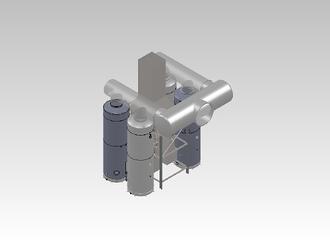 in Kemper County Mississippi is being built. The process uses locally mined lignite coal for fuel which contains 40% moisture. The coal must be dried before it is converted to syngas in the gasifier.
in Kemper County Mississippi is being built. The process uses locally mined lignite coal for fuel which contains 40% moisture. The coal must be dried before it is converted to syngas in the gasifier.
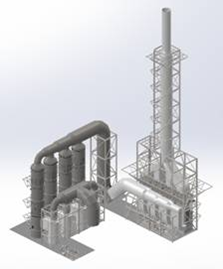 is upgrading a sulfite pulping mill in Eastern Canada to incorporate a new red liquor recovery boiler for power generation. The boiler system increases annual green energy production by up to 40-megawatts, reduces sulfur dioxide emissions by 70%, and increases annual production capacity of specialty cellulose by 5,000 metric tonnes. The off-gas from the recovery boiler contains a high concentration of SO2 which needs to be recovered for re-use in the production process.
is upgrading a sulfite pulping mill in Eastern Canada to incorporate a new red liquor recovery boiler for power generation. The boiler system increases annual green energy production by up to 40-megawatts, reduces sulfur dioxide emissions by 70%, and increases annual production capacity of specialty cellulose by 5,000 metric tonnes. The off-gas from the recovery boiler contains a high concentration of SO2 which needs to be recovered for re-use in the production process. 
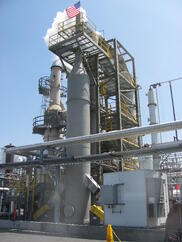 needed to retrofit an SO2
needed to retrofit an SO2 